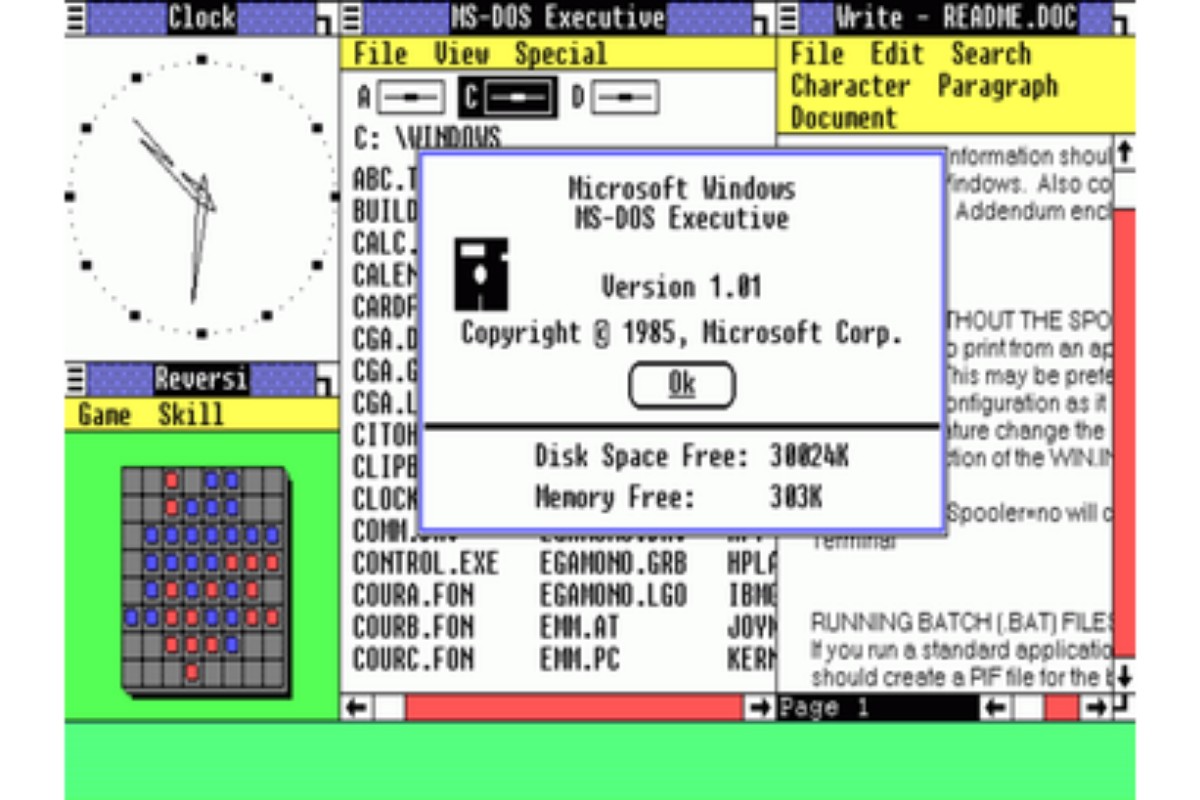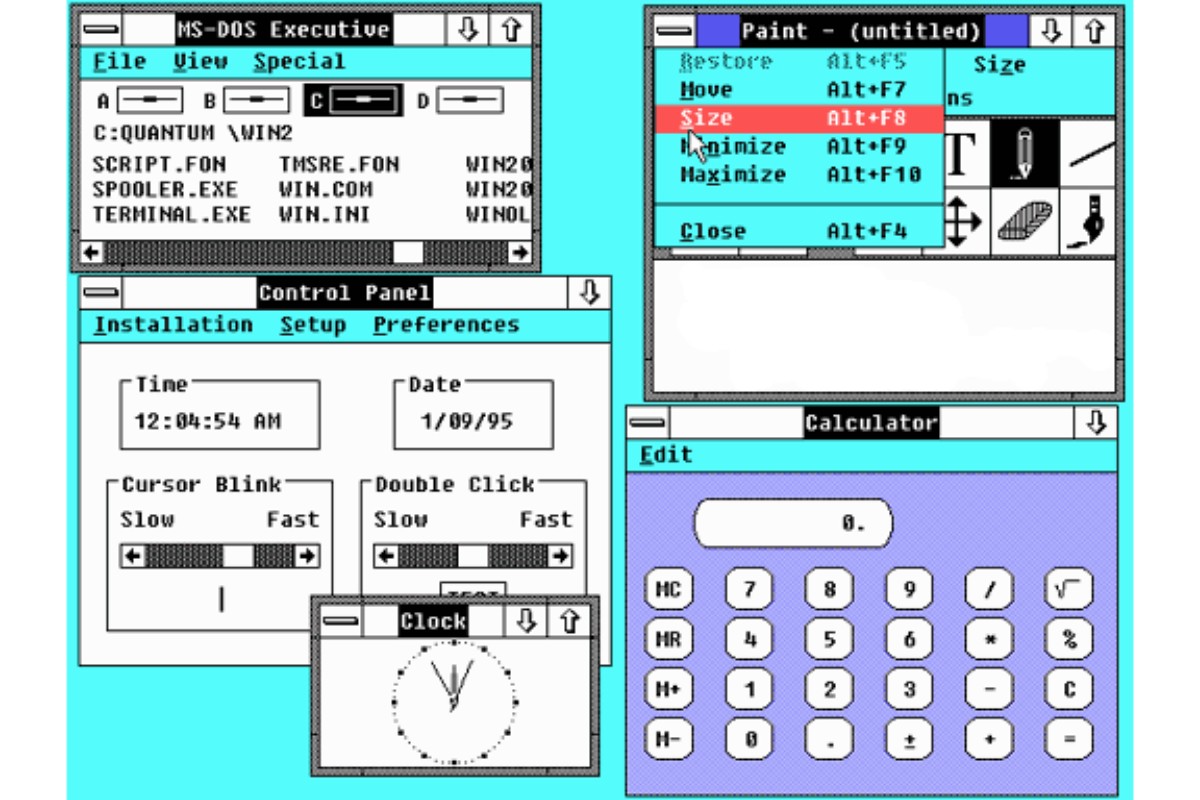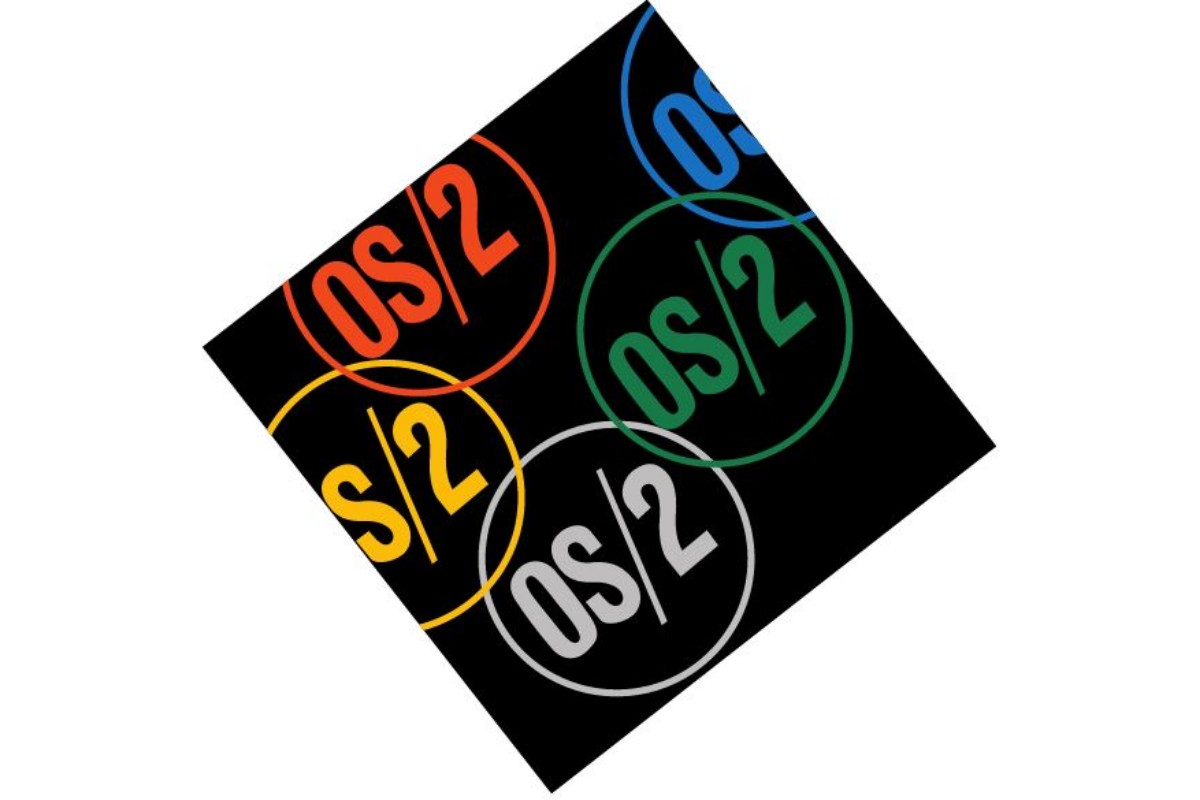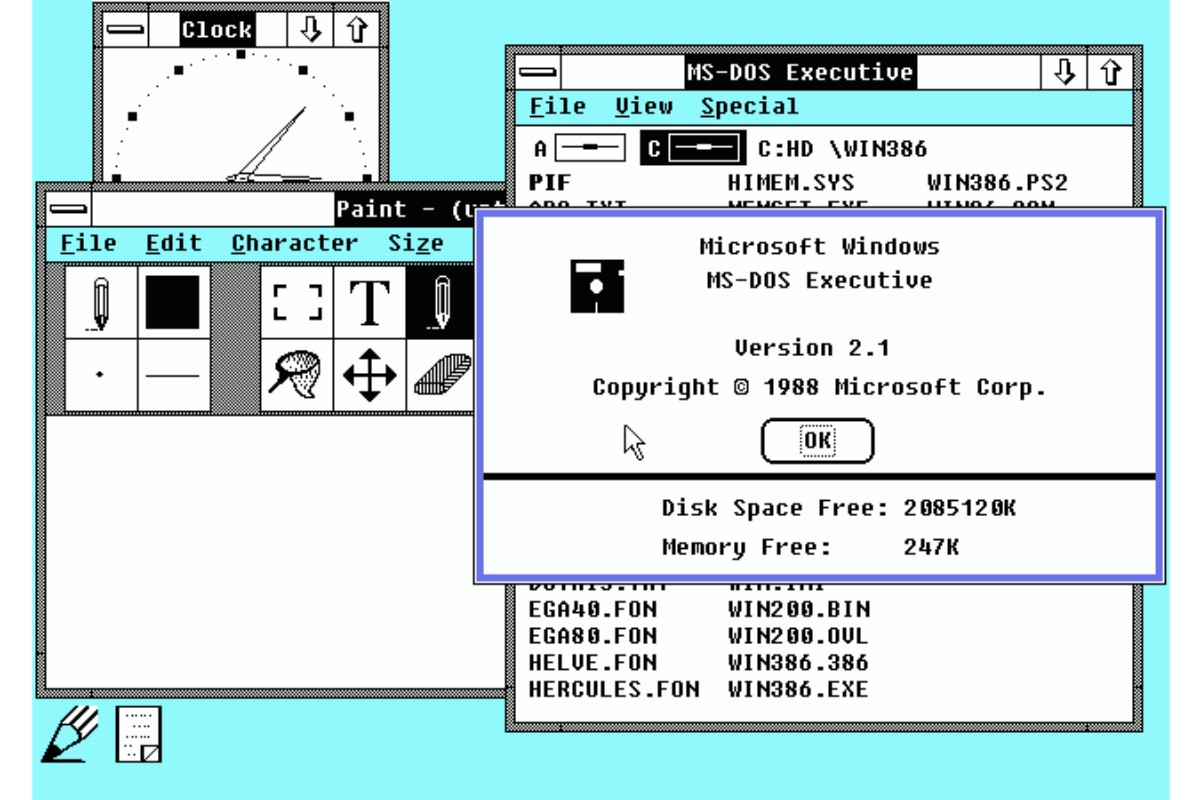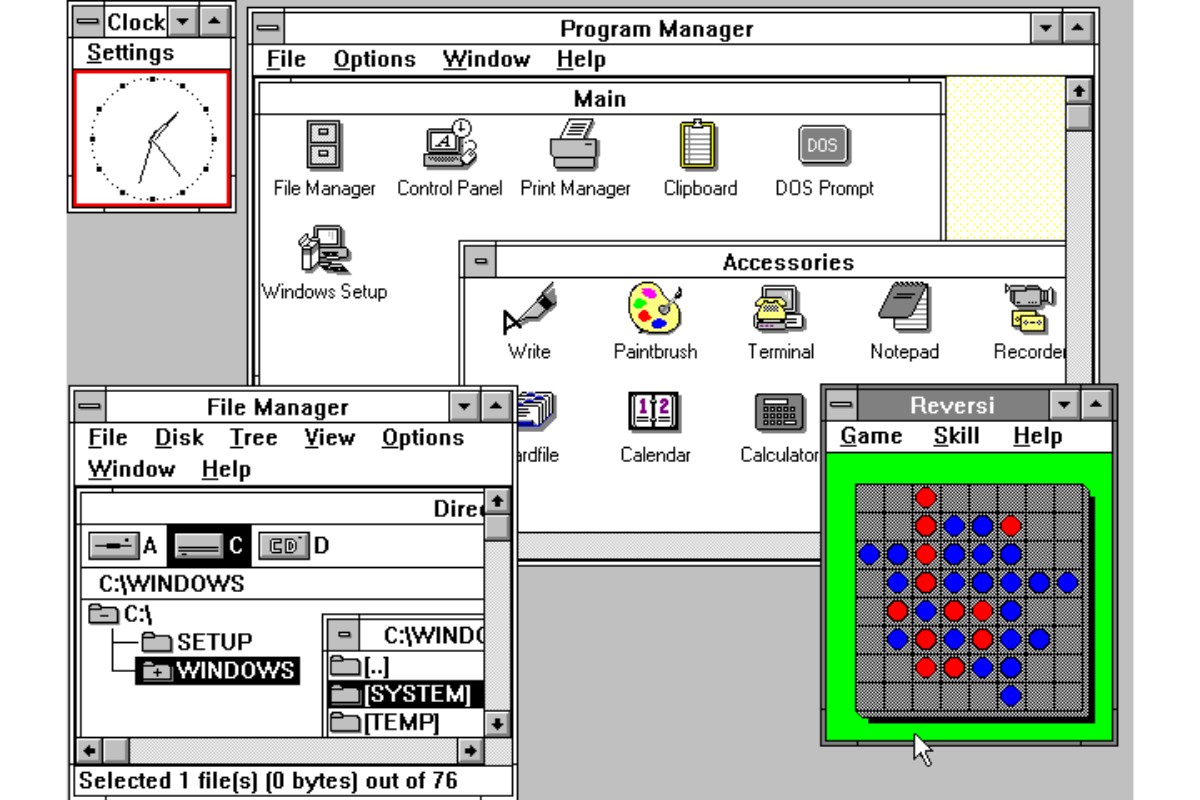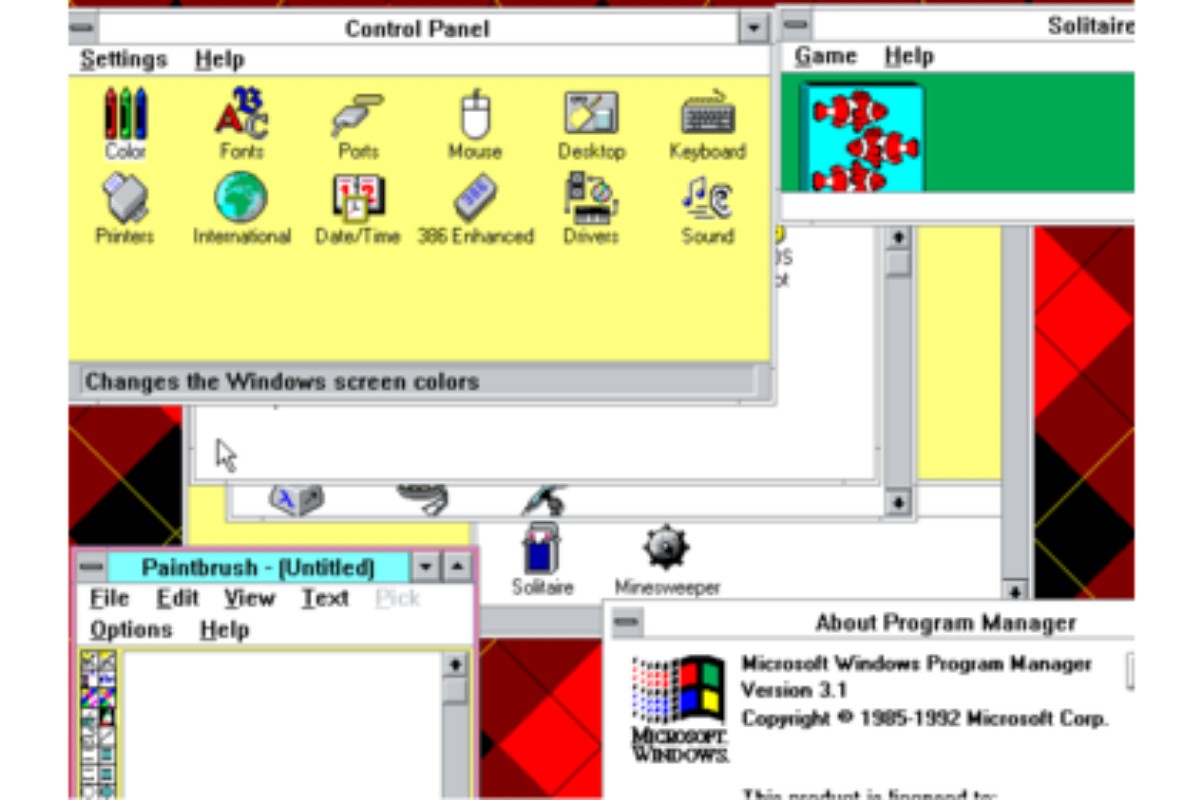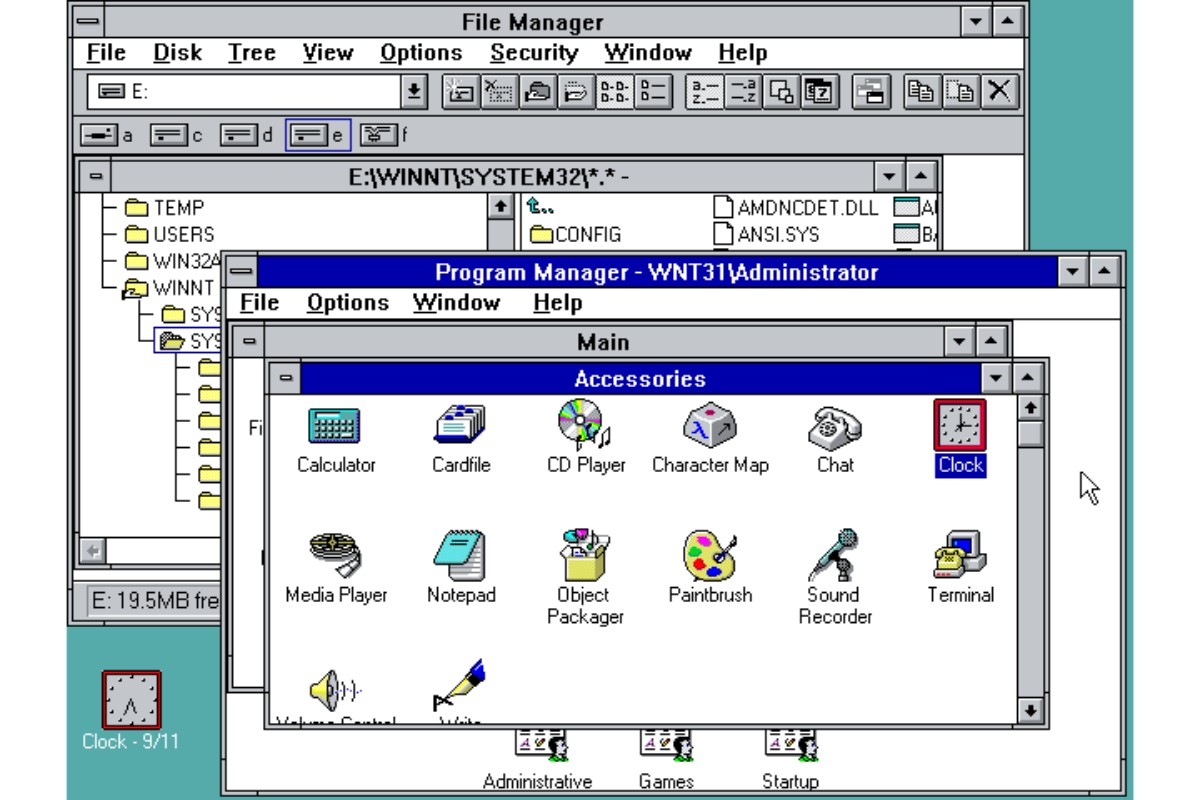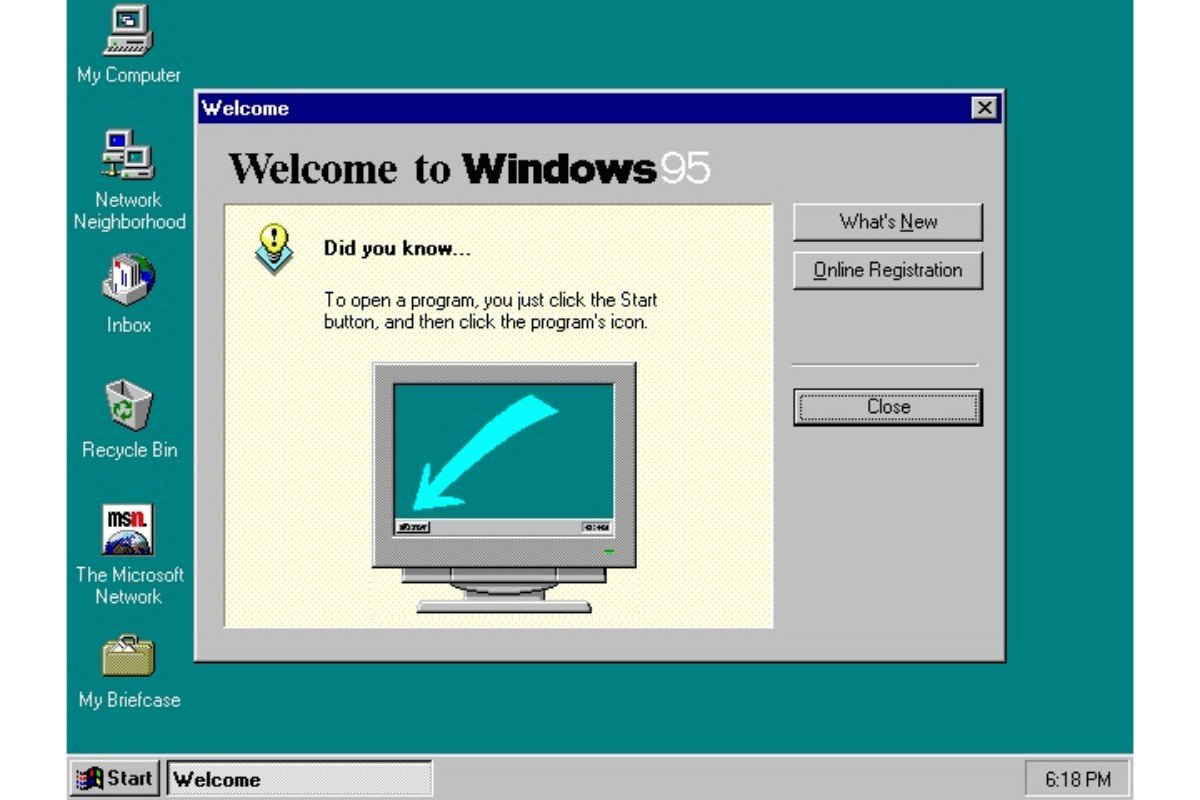History Of Microsoft Windows
Microsoft Origins
Microsoft is well known today for its Windows operating system, which is used on computers around the world. It's hard to think of a time when Microsoft didn't produce Windows. In the beginning, however, Microsoft developed other operating systems such as Altair BASIC. Over the years, Microsoft developed other OSes outside of the Windows product line, which contributed to the development of Windows.
In this article, we will look at the major desktop-oriented operating systems developed by Microsoft. This means we will not look closely at server operating systems or versions of Windows designed for mobile phones, cars, or other devices.
MORE: 23 Years of Supercomputer Evolution
MORE: History Of Mechanical Keyboards
MS-DOS (1981)
Although Microsoft got its start with Altair BASIC, it didn't become the OS powerhouse that it is until the introduction of MS-DOS. The initial release of MS-DOS (known as 86-DOS at this time) was actually developed by Tim Paterson, who worked for Seattle Computer Products at the time. In many ways, it was a clone of the CP/M OS developed by Digital Research, but Paterson made it compatible with x86 processors and introduced the FAT12 file system as the primary disk format.
Microsoft later acquired 86-DOS from Seattle Computer Products and hired Paterson to continue development on the OS. After rebranding the OS as MS-DOS, it was licensed to IBM, which rebranded it again as PC-DOS.
MS-DOS was not particularly unique in terms of its functionality or user interface, but it had two key advantages over all other contemporary DOS-like OSes. First, it supported x86 processors, which would ultimately become the most heavily used type of computer processor. Second, Microsoft's contract with IBM lead to an enormous amount of software being developed for MS-DOS/PC-DOS. These advantages allowed Microsoft's MS-DOS to dominate the PC market for the next decade.
Get Tom's Hardware's best news and in-depth reviews, straight to your inbox.
MORE: The History of Intel CPUs
MORE: The History of AMD CPUs
Windows 1.0 (1985)
Immediately after Microsoft launched MS-DOS, it started working on the first version of Windows. This early version of Windows 1.0 is best viewed as a graphical user interface (GUI) for MS-DOS; the OS itself is incapable of operating without DOS. Microsoft introduced new APIs with Windows 1.0 that allowed programs to run natively on the Windows OS itself, but the number of programs that used these APIs was dwarfed by the ever growing library of MS-DOS applications. Windows 1.0 also introduced virtual memory, which allowed the OS to use a limited amount of space on the hard drive as RAM. Virtual memory is significantly slower than actual RAM, but larger applications that require more than the available amount of RAM to run can take advantage of the capacity.
MORE: The History of Nvidia GPUs
MORE: 30 Year History of AMD Graphics
Windows 2.0 (1987)
Windows 2.0 was an overhaul of the original Windows 1.0 operating system and had a richer feature set. A key improvement found in Windows 2.0 was the ability to have Windows overlap each other. This made multitasking easier, because users could better utilize the available desktop real estate.
MORE: 23 Years of Supercomputer Evolution
MORE: History Of Mechanical Keyboards
OS/2 (1987)
Although IBM's OS/2 was technically a competitor to Microsoft's Windows, it is worth noting that it was co-developed by Microsoft. Early versions of OS/2 looked similar to Windows 2.0 and Windows 3.0, but they were functionally quite different. Both OS/2 and Windows (all versions) were capable of executing DOS software, and they both aimed to extend the functionality of the PC by allowing you to multitask between DOS and native software.
Eventually IBM and Microsoft would clash as Windows and OS/2 competed against each other in the market. Microsoft ultimately ended its involvement with OS/2; at the time, it was developing OS/2 3.0. Instead of putting the project on hold, Microsoft used its work on OS/2 3.0 to jump start its development of a new OS that would later be known as Windows NT.
As for OS/2, it was actively developed by IBM into the late 1990s, and the company continued to provide support until December 31, 2006. OS/2 ultimately failed to be profitable to maintain, however, as it was developed specifically for IBM's hardware and was more expensive than Windows. It was later sold to another company and is still developed under the name "eComStation."
MORE: The History of Intel CPUs
MORE: The History of AMD CPUs
Windows 2.1 (1988)
Windows 2.1 was an incremental update to the Windows 2.0 operating system. It was optimized to take advantage of new features present in Intel 80286 and 80386 processors. This lead to the operating system sometimes being referred to as Windows/286 and Windows/386. One of the key improvements was the inclusion of HIMEM.sys, which allowed Windows 2.1 to access larger amounts of memory than Windows 2.0. Microsoft also added support for protected mode on Intel 80386 processors, which allowed the processor to run multiple programs in parallel. Before the introduction of protected mode, you could work on only a single application at a time; all other applications were suspended in the background.
Windows 2.1 was subsequently replaced by Windows 2.11 in 1989, but the two OSes are essentially identical. The key improvements in 2.11 included improved drivers and support for AppleTalk.
Due to the enhancements in Windows 2.1, it was the first Windows operating system to require a hard disk drive.
MORE: The History of Nvidia GPUs
MORE: 30 Year History of AMD Graphics
Windows 3.0 (1990)
Windows 3.0 featured numerous improvements over Windows 2.11, but it is closely related to its predecessor. The user interface was polished, and support was added for 16-color images. In VGA mode, the OS was capable of rendering 256 colors on screen at the same time. The OS also supported an enhanced protected mode that allowed programs to easily access larger amounts of system memory. "Larger," though, is relative, as Windows 3.0 could support a maximum of 16MB of RAM. Fully installed, the OS consumed roughly 5MB of space.
Windows 3.0 quickly outshined its predecessors due to its numerous enhancements. By working with OEMs to ship systems with Windows pre-installed and by pricing the OS competitively against OS/2 and Apple's Mac OS, Microsoft was able to sell millions of copies of Windows 3.0 in its first year.
As an interesting side note, this was also the first version of Windows to ship with Solitaire.
MORE: 23 Years of Supercomputer Evolution
MORE: History Of Mechanical Keyboards
Windows 3.1 (1992)
Microsoft continued to improve Windows 3.0, which lead to the release of Windows 3.1.
There are three key improvements inherent in Windows 3.1. First, it removes support for real mode. This limited the OS to running on 80286 or newer hardware, but it significantly improved system stability. Second, it added Truetype font support, which made Windows more useful for office and document publishing work. Third, it raised the maximum memory support to 4GB, with individual programs able to access up to 16MB each. The OS required a minimum of 1MB of RAM and at least 15MB of hard drive space to be fully installed.
Microsoft also produced a few alternative versions of Windows 3.1, such as Windows for Workgroups 3.1 and Windows 3.1 Multimedia PC. These versions of Windows 3.1 contained enhancements that were important to specific clients, but not particularly useful to everyone.
MORE: The History of Intel CPUs
MORE: The History of AMD CPUs
Windows NT 3.1 (1993)
In 1993, Microsoft released its first version of Windows NT. The OS was called Windows NT 3.1 to mimic Windows 3.1, which had been released the previous year.
Although Windows NT and Windows 3.1 look similar, they are actually quite different. Unlike Windows 3.1, Windows NT 3.1 was built from scratch as a fully 32-bit OS. It was started as a redesign of IBM's OS/2, but the design was forked and heavily modified. This gave Windows NT 3.1 the ability to run applications created for Windows, MS-DOS, and OS/2. Microsoft also created the OS to support multiple processing architectures. Upon its release, it was able to run on x86 and MIPS CPUs, and it later gained support for DEC's Alpha processors. Windows NT 3.1 was also more stable than Windows 3.1.
Although Windows NT 3.1 was more advanced and feature rich than Windows 3.1, it had limited sales and was less successful than its counterpart. The operating system had relatively high system requirements for its time, which prevented most people from using it. The minimum requirements for the OS were a 32-bit 25MHz 80386 processor, 12MB of RAM, and a 75MB HDD. As a result, Windows NT 3.1 was mostly reserved for use on servers and high-end business systems.
MORE: The History of Nvidia GPUs
MORE: 30 Year History of AMD Graphics
Windows 95 Part 1 (1995)
After the release of Windows 3.1, Microsoft planned to cease development of future DOS-based OSes. Windows 3.1 would be maintained as a consumer-oriented product for a number of years, while Microsoft worked on future versions of Windows NT. Eventually, a more user-friendly OS known as "Cairo" was to be released as a solution for both consumers and businesses. Fierce competition from other operating systems such as Mac OS and OS/2, however, cut into Microsoft's market share and showed the company that it needed to quickly develop a new operating system to battle Apple and IBM. As Cairo was still years away from being finished at that time, Microsoft turned its attention to creating a new OS that would become Windows 95.
MORE: 23 Years of Supercomputer Evolution
MORE: History Of Mechanical Keyboards
Windows 95 Part 2 (1995)
The initial design goals for Windows 95 were to create a more user-friendly OS that supported 32-bit software, was easier to install, and was more stable. Originally, Microsoft planned to make the OS easier to use by simplifying the way software and networks were configured by end users.
The user interface was supposed to remain unchanged from Windows 3.1, as Microsoft was already developing a new UI for Cairo. Ultimately, though, Microsoft ported the new UI to the Windows 95 project. As a result, Windows 95 became the first version of Windows to feature the Start bar, and it also was the first to use Windows Explorer.
Windows 95 was technically still DOS-based like Windows 3.1, but it also had an unprecedented degree of independence from DOS in terms of its architecture and internal operation. System stability was significantly increased by running multiple virtual machines under the OS. This reduced the impact of a single piece of software crashing. It also placed a layer of software between programs and the hardware, which made it less likely a software crash would cause the entire OS to fail.
Performance was drastically improved in Windows 95, because the OS supported execution of preemptively multitasked 32-bit applications in protected mode. The OS was also able to use faster processors, and it had practical memory support for up to 512MB of RAM. The minimum requirements called for just a 32-bit processor, 4MB of RAM, and 50MB of hard drive space. This meant the OS could be run on a wide number of computers that didn't meet the requirements of Windows NT.
As For Cairo, it was ultimately scrapped, but parts of its code were re-used in future OSes.
MORE: The History of Intel CPUs
MORE: The History of AMD CPUs
-
nine9fingers You have to remember, Gates added nothing to PC-dos, Dos or Windows, all he was ever interested was collecting a penny from each USERReply -
shrapnel_indie Although you don't hear about it anymore, rumors existed of Bill Gates dumpster diving to get his BASIC code. It was also Microsoft's partnership with OEMs that ensured no other OS had a shot of becoming popular. MS had legal issues that appeared later for the practice as it forced OEMs who wanted to use MS Operating Systems into exclusivity.Reply
WARNING: Conspiracy theory found within comment.
I also still think the history between OS/2 and Windows NT is sketchy. Look at some of the naming conventions between parts (i.e. OS/2: HPFS, WinNT:NTFS), which I see is mentioned when talking about NT3.1. Also, look at how OS/2 didn't actually make major and needed improvements until after Microsoft ended the partnership between IBM and themselves. IMHO, MS was, despite what they told IBM, working on their OS/2 killer from day 1 (mostly planning, and learning at the earliest of stages.) Using the knowledge of IBM to learn and build from from the early stages, while making sure OS/2 wasn't good enough too compete when the time came. -
bit_user Too bad OS/2 got killed off. I knew some folks who really liked it.Reply
Also, please review ReactOS (http://reactos.org).
A couple points:
■ Windows for Workgroups 3.11 was a pretty major release, as I think it was first to integrate a TCP/IP stack. I had a friend who seemed unreasonably enthusiastic about it (he had a home network).
■ Windows NT introduced NTFS. Pretty obvious, but still... a big development. It also shipped with OpenGL support, as MS was intending to compete in the workstation segment. Fun fact: Michael Abrash optimized the NTFS code at MS, before joining ID Software to work on Quake. He's now Chief Scientist at Oculus/Facebook. He literally wrote the book on code optimization (The Zen of Code Optimization).
■Windows 95 ... System stability was significantly increased by running multiple virtual machines under the OS.
I'm no Windows architecture guru, but I think it's misleading to say it used VMs. These certainly weren't VMs in the way we now understand them. I think they were simply protected memory segments, with DOS boxes replicating the state of a DOS emulation layer. Also, Windows 3.1 (and possibly before) already used Protected Mode (anyone remember General Protection Faults?). Maybe Win95 made this compulsory?
■ Cool thing about Win95 is that programs always ran in 32-bit mode. So, you didn't need to do anything special to have up to 4 GB of flat address space in a single program. As a programmer, I considered this feature (as well as the promise of Direct 3D, which got dropped from the initial release) the most exciting development. Prior to that, it was annoying just to go beyond 64k (due to x86's 20-bit segmented addressing scheme).
■ Win95 bundled Internet Explorer, which was the main source of their anti-trust litigation. It looked like MS might've gotten split up, but George W. Bush put an end to the matter, when he took office.
■ I'm pretty sure WinNT 4.0 had a version of Direct 3D released for it. Win2k shipped with Direct 3D support.
■ I never ran WinME, but I think it was the last to ship without NTFS support.
■ Windows 8 introduced support for cross-platform apps that could be run on both ARM-based WinRT tablets/phones and x86_64 desktop PCs.
■ Not only does Windows 10 have embedded spy-ware, but it also integrates Windows Store.
Me: DOS 5.0 -> DOS 6.22 -> Win3.1 -> (briefly Win95) -> WinNT 4 Server -> Win2k Server -> WinXP Pro -> Win7 Pro
And I first booted Linux in 1991. -
synphul I ran most of these at one point in time. Before switching to xp I was happy to get rid of win9x and replace it with win2k, the nt based os's were a lot more stable and seemed to have better memory management.Reply
I think it's why xp was so successful, prior to xp there was a sort of division between home and business operating systems. The home varieties still being dos based with the business versions like win2k being nt based. Most things ran well on win2k but they didn't have quite the expansive program/driver support that the dos based had.
When xp rolled out it merged the best of both worlds, the stability of the nt kernel, improved memory management and the broader driver/app support of the 'home' flavors. Likely one of the best single moves MS made in their history of the windows os. -
Martell1977 What about Windows 3.11 for Workgroups? That was my first Windows operating system. I had DOS 6.22 with it, which is where I spent most of my time.Reply
Also, I was surprised there was no mention of when MS partnered (with no contract) with Apple and took the GUI/mouse interface, which ironically they got from Xerox.
Lastly, when did NTFS get introduced? And I was surprised there was no mention of how Windows XP was able to install/run on FAT32 or NTFS, but on NTFS it seemed more stable and ran faster. IIRC, Windows XP was the last Windows OS to use FAT32.
I remember someone telling me that Windows 98 got it's name from the fact that you had to reinstall it every 98 days as it degraded so fast...LMAO! -
bit_user Reply
There was an infamous bug in Win95 or Win98, where the machine would crash every 28 days when some timer overflowed.18858540 said:I remember someone telling me that Windows 98 got it's name from the fact that you had to reinstall it every 98 days as it degraded so fast...LMAO!
I think Win98 had some sort of background optimizer that ran defrag and maybe something else. I seem to recall it got a lot of bad press, at least until SE. I never ran either, as I was already on NT 4 Server, with a quad-CPU machine! -
Tom Griffin Seems to be missing Windows/286, Windows/386 and Windows NT 3.5x. Fun days using Microsoft Macro Assembler to access the Windows API.Reply -
turkey3_scratch I vaguely remember when I was like 3 years old on the Windows 2000 machine playing some Teletubbies game on the Internet. That old machine is still in the basement, I should open it up. I don't think it works anymore.Reply


